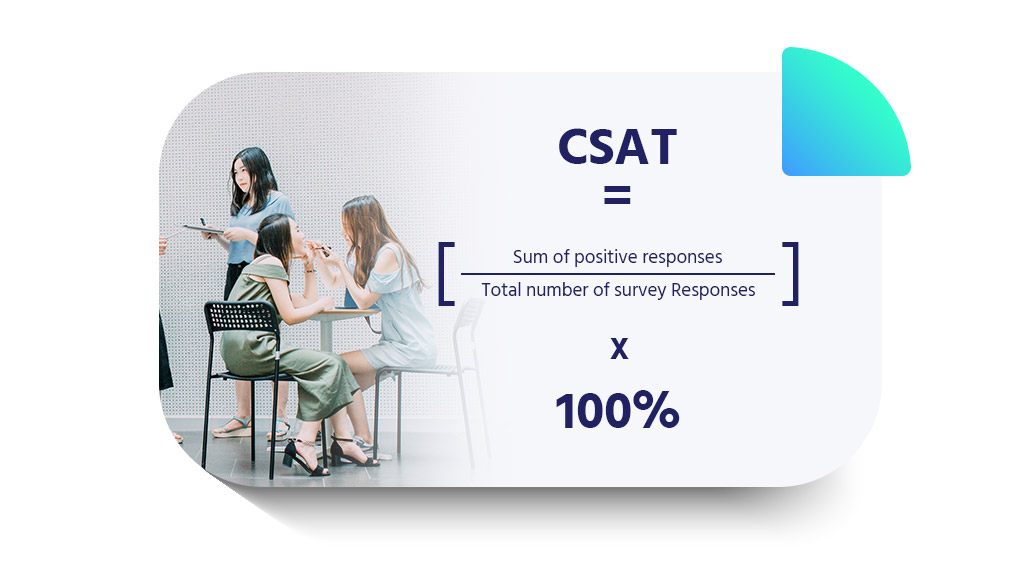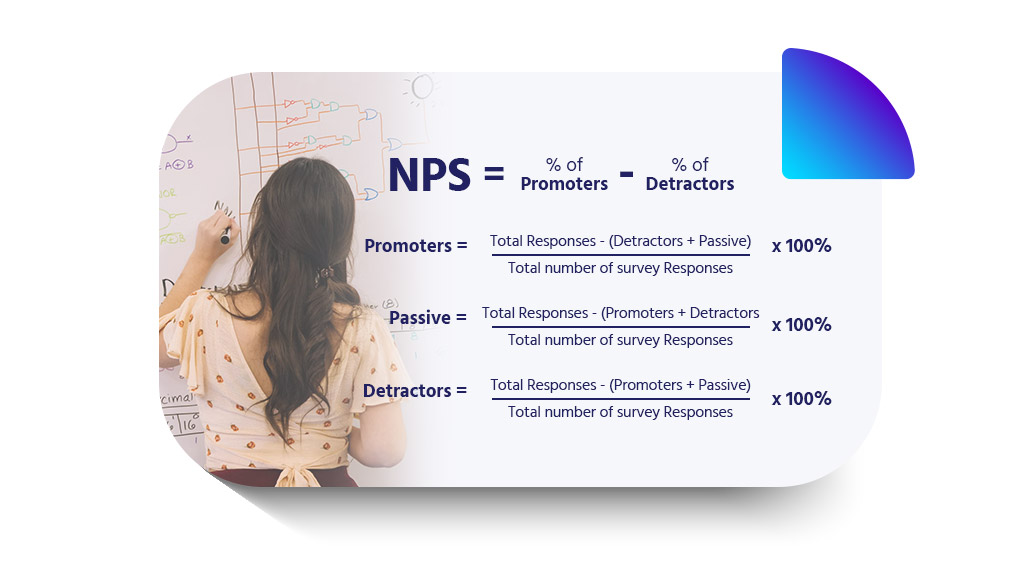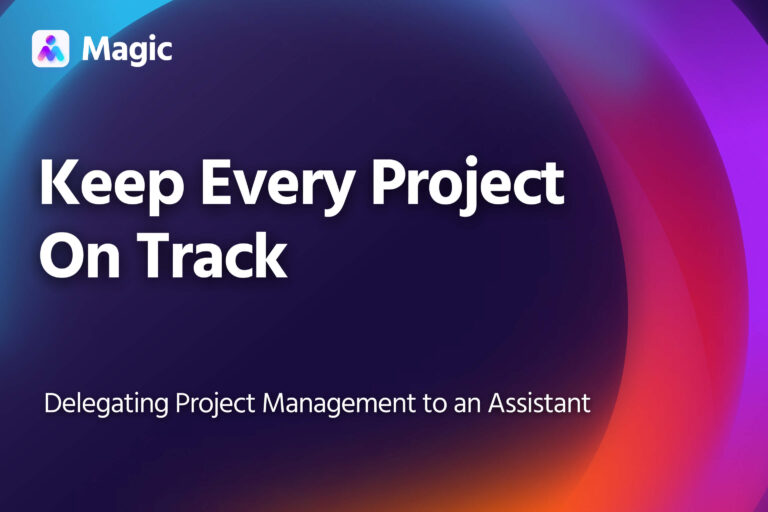Gartner found that 81% of marketers consider customer experience (CX) as the main point of competition in their industry. Factors such as brand values, product/service pricing, quality, availability, and customer service make up the CX.
Measuring customer satisfaction allows you to gauge how each factor affects consumers’ behavior and decisions in doing business with you. Think of it as comparing expectations and reality to find out why your customers are satisfied or not. This way, you can counter customer churn and defection.
Keep track of customer satisfaction metrics and assess ratings using the following steps:
5 Steps to Measure Customer Satisfaction
1. Set your goals and plan
Create goals to outline your plan for customer satisfaction. These will keep teams aligned in working towards success. Setting business goals also provides the parameters for measuring customer satisfaction.
Make them S.M.A.R.T. which stands for specific, measurable, attainable, realistic, and time-bound to help organize and reach your goals. Ask yourself and your team a lot of questions to fine-tune your plan.
| SMART GOALS | QUESTIONS TO ASK |
|---|---|
| Specific | What do we want to accomplish? Who needs to be included? What steps should be taken to achieve it? |
| Measurable | What are indicators of reaching our goals? What data collection method should we use? |
| Attainable | Do we have the resources and capabilities to achieve our goals? Has it been done before? What are we missing? Is the goal within reach given our resources and time? |
| Relevant | Can we commit to achieving our goals? Does it align with the company’s broader goals? Why is the result important? |
| Time-bound | When should we achieve goals? How much time should be given to each task to be done in reaching goals? |
2. Develop a customer satisfaction survey
A survey lets you get accurate feedback on customers’ experience with your business. Customize it according to your goals. Make sure its questions are easy to understand and laid out clearly.
In measuring customer satisfaction, design different surveys for people in different parts of the customer life cycle. When the survey’s designed with the recipient in mind, they’re more likely to answer them properly.
Note that people are more likely to complete shorter surveys. Longer surveys may provide more detailed insights, though—so use them with customers who are more likely to see them through to the end.
Below are popular customer satisfaction tools you can choose or combine to get data:
Customer Satisfaction Score
Customer Satisfaction Score (CSAT) is the most commonly used and straightforward way to measure customer satisfaction. It asks a simple question such as how satisfied a client is with a product, service, transaction, or interaction from a corresponding survey scale such as:
- Numerical scores (e.g. 1-3, 1-5, 1-10)
- Verbal indicator (e.g. very unsatisfied, unsatisfied, neutral, satisfied, very satisfied)
- International symbols (e.g. stars, smiley faces)
CSAT is short and intuitive, often producing a high response rate. However, it only reflects short-term sentiment and responses could be ambiguous due to wide-ranging benchmarks and cultural bias.
To calculate it, get the total of all positive responses then divide it by the total number of responses. Multiply the quotient by 100 and the final figure is the percentage of people satisfied with their experience.
CSAT formula:
Customer Effort Score
Measuring customer satisfaction through Customer Effort Score (CES) focuses on the ease of their experience. It gauges user effort in which the easier an action is to a customer, the better the experience they will have.
User effort can be using a product or service, searching for the information they need or resolving a problem. Moreover, you can present your CES survey using scales such as:
- Likert scale – A five to seven-point numerical scale that aligns with relevant phrases like “extremely difficult” or “extremely easy”
- Emoticon rating – Associates user effort level with smiley faces or sad faces
CES is a simple and standardized metric wherein low effort scores correlate to a high repurchasing rate. It’s applicable to all client processes but factors like product cost, quality, or competitors are not taken into consideration.
To calculate the average amount of effort your customers put in, add all the customer effort ratings and divide it by the total number of survey responses.
CES formula:
Net Promoter Score
Net Promoter Score (NPS) is a metric for customer loyalty and brand devotion. In measuring customer satisfaction, NPS also predicts business growth. It asks customers to rate how likely they would recommend your company to a friend or colleague using a numerical scale.
NPS classifies customers’ levels of loyalty into three groups, providing a standard measurement to your team in each business area. Thus, you can easily benchmark your score and see your standing among your competitors.
To calculate the aggregate score, subtract the percentage of detractors from the percentage of promoters. The survey responses are categorized into three groups:
- Promoters – Respondents who gave a score of 9 or 10
- Passive – Respondents who gave a score of 7 or 8
- Detractors – Respondents who gave a score of 0 to 6
NPS formula:
3. Specify your survey’s trigger
Setting your survey’s trigger is crucial to the quality and usefulness of the data to be derived. Figure out whom to survey and when to send your questionnaire.
Survey triggers can include visitor behavior, referring domain, search engine source, browser, device, and geographic location. You should also keep in mind your goals in determining your survey’s trigger.
Rainforest QA’s former VP of Customer Success Nils Vinje shared a tip on maximizing the use of customer satisfaction surveys:
The best time to send a customer satisfaction survey is after a meaningful part of the customer lifecycle is completed. For example, sending a satisfaction survey at the end of the customer’s onboarding will help you capture valuable feedback on how to improve the onboarding experience.
At this point, the customer likely has made up their mind on whether or not your solution solves their problem, and if it doesn’t, you need to know that—ASAP.
Moreover, a survey should be sent within 24 hours of its trigger, so that the experience is still fresh in their mind.
4. Choose your survey medium
In choosing your survey medium, take into account your survey layout, questions, and trigger. You can integrate different software and tools to send surveys to your customers. Moreover, survey tools allow you to set the triggers you’ve decided.
The three primary mediums for measuring customer satisfaction you can choose from are:
- In-app or on-site surveys (e.g. Usabilla, HotJar)
- Long email surveys (e.g. SurveyMonkey, Google Forms)
- Post-service or post-purchase surveys (e.g. Typeform)
There are also survey tools with advanced targeting and reporting like Qualaroo that help explore open-ended responses and dive deep into your customers’ perceptions.
5. Analyze and adjust
The end goal of measuring customer satisfaction is to improve customer satisfaction using data-driven plans. Once you’ve conducted your survey, all that’s left to do is analyze survey responses. This way, you can improve customer experience and your means to measure customer satisfaction.
You should also track social media metrics and web analytics for additional insights. Many survey tools already have built-in analytics that take survey responses into readable information. This way, you’ll know which areas you need to focus on and what you can do to resolve them.
Hire a Customer Support Assistant to Measure Customer Satisfaction
There are a lot of things to be done in customer support to ensure that your customers are happy which drives sales. Your support team has their hands full of tasks from resolving tickets to measuring customer satisfaction.
A customer support assistant can organize and manage the process of measuring customer satisfaction so your support team can just focus on improving it. They can prepare the survey questionnaires, send them out to the right people, and make reports and recommendations based on responses.
Magic can match you with a virtual assistant to offload work from your support team so they can do more in growing your business. We’ll source, screen, and qualify a customer support assistant to take care of measuring customer satisfaction and other support services such as:
- Phone support – A customer support assistant can answer phone calls from clients.
- Email support – A Magic Assistant can respond to queries sent by clients via email.
- Chat support – A virtual assistant can provide real-time responses to customer queries via live chat.
- Escalation management – A customer support assistant can rank tickets based on their priority and make sure that they are resolved at the right level of authority.
- Positive scripting – A virtual assistant can draft support scripts using positive words to avoid discouraging clients and lend credibility to your brand.
- Quality management – A Magic Assistant can oversee the activities of the support team to ensure that they continuously deliver consistent service and help improve their performance.
- Customer support training – A customer support assistant can help produce materials and facilitate customer product training for clients or employee evaluation for your support team.
A customer support assistant can positively impact the productivity and profitability of your support team. Address staffing issues and fluctuating load at a low cost with Magic. Get matched with a Magic Assistant today!











